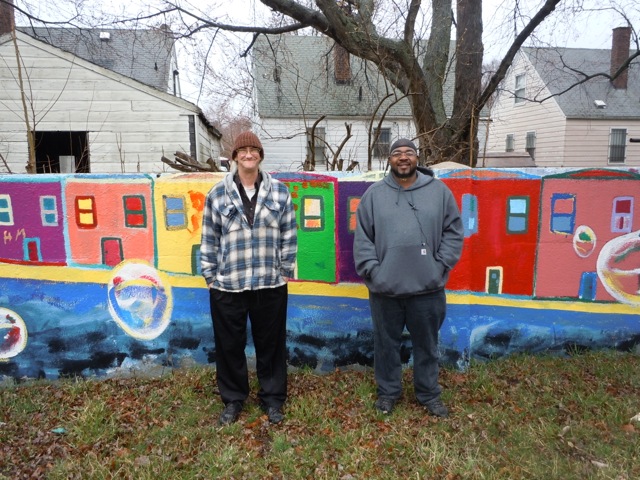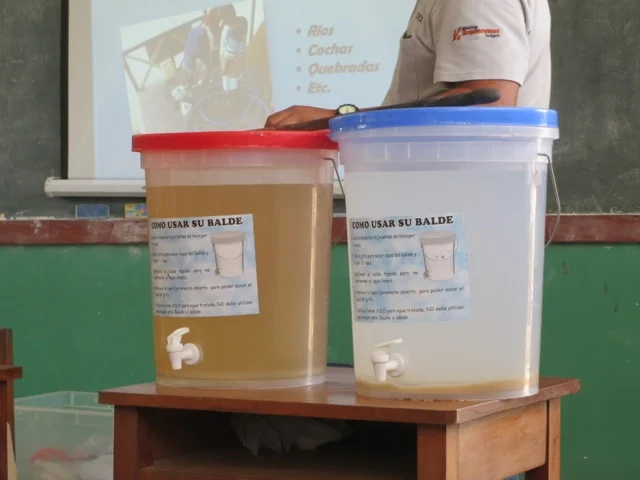AS I BEGAN learning about Seva, I was surprised to discover that the effectiveness of any kind gesture or service program depends heavily on the would-be helpers’ intent and the personal qualities they bring to the act. At first I hoped to find quick solutions. I wanted to know which kinds of programs work and which don’t, period. But that’s not the way Seva unfolds.
Children drink filtered water for the first time in the remote jungle village of Auca Cocha near the Amazon River in Peru.
To truly help others, I learned, it’s vital to cultivate certain traits: Careful listening. Trust. Patience. A willingness to let go and see what happens. A willingness to admit that you don’t have all the answers. A willingness to work shoulder-to-shoulder with those needing help. These aren’t traits we normally think of American values. We’re efficiency experts. We want to go in like commandos, see what’s wrong, fix it, and move on. As a result, our prevailing notion of how to help is often skewed.
This is a huge problem. Its legacy can be seen around the world in poverty aid projects that have gone awry. There are plenty of examples on admittingfailure.com, a web site created by the Canadian chapter of Engineers Without Borders to explore why the best of intentions often fall short. It turns out that even the most experienced aid workers make mistakes, usually when they go into situations assuming they have all the answers.
But the toll is perhaps even greater in the realm of personal encounters. If you’ve ever met someone who’s hurting and been at a loss for what to say or do, I’m sure you can understand this. In our culture, we are expected to hide our suffering. As a result, we don’t know how to react when we see it in others.
Below are ten important things you can do to become a practitioner of Seva. There are many more, of course. As much as anything, Seva is a spiritual practice. But these steps will get you started on the path.
The 10 Lessons of Seva
- When you meet someone who needs help, stop whatever you’re doing and focus your attention completely on that person. Forget about where you need to be in half an hour. Staying in the moment is essential.
- Listen carefully and shake off all thoughts that you have the answer or know how to solve the person’s problems. There may be complicating circumstances you don’t see.
- Ask the person, or group, what strengths they have. Work with them to find answers based on those strengths. This helps you forge solutions that the people needing help will accept. It also builds trust.
- Cultivate compassion. You can take the first step toward doing this by abandoning any notion of yourself as the magnanimous bringer of aid. Compassion also helps ward off resentment and burnout.
- Remember that you are not being called to solve all the person’s problems. To quote someone who has worked for many years with the homeless, “You only have to help them for today.”
- Make certain you understand the culture in which you’re attempting to work. Cultural misunderstandings, both domestically and in other countries, can torpedo even the most heartfelt aid efforts.
- Love everybody—simply by being patient and kind, not boastful or arrogant. Service work is not a picnic. You are quite likely to encounter people who disagree strongly with you, and who may even be unruly and belligerent.
- If you find yourself growing angry, bitter, or afraid, step away for a time and let others do the heavy lifting. Seva is never a one-person show.
- Admit your mistakes and failings. Show your vulnerable side. Such openheartedness builds trust and encourages others to do the same.
- Do not try to manipulate or control the outcome of your efforts. Simply give, openheartedly, and trust that miracles will happen. Give of yourself simply for the joy of giving.


